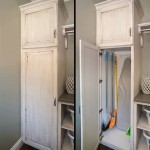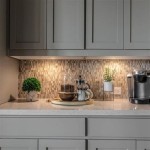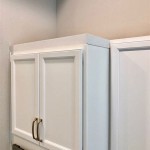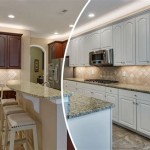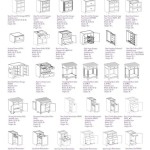Trim Above Kitchen Cabinets: Elevating Your Kitchen Aesthetics
Trim above kitchen cabinets, often overlooked, plays a crucial role in enhancing the visual appeal and functionality of your kitchen. By elevating the space above your cabinets, trim adds architectural interest, conceals gaps, and provides a refined finishing touch to your kitchen's design.
Types of Trim
There are various types of trim available, each with its unique design and purpose. Some popular options include:
- Cove Molding: Rounded profile with a subtle curve, adding a timeless elegance to the space.
- Crown Molding: Elaborate profile that adds drama and grandeur to traditional and formal kitchens.
- Light Rail Molding: Narrow and simple, designed to hide the gap between cabinets and the ceiling, providing a seamless transition.
- Fascia Board: Wide and flat, used to cover the top of cabinetry and create a more custom look.
Benefits of Trim
Incorporating trim above kitchen cabinets offers numerous benefits, including:
- Architectural Interest: Adds visual depth and dimension to the kitchen, making it feel more spacious and inviting.
- Concealed Gaps: Hides unsightly gaps between cabinets and the ceiling, creating a polished and finished look.
- Enhanced Aesthetics: Complements the design style of the kitchen, whether it be traditional, contemporary, or transitional.
- Improved Lighting: Some trim profiles incorporate hidden lighting, providing ambient illumination and highlighting the upper cabinets.
Material Selection
Trim can be made from various materials, including:
- Wood: Classic and versatile option, available in different species and finishes to match your kitchen decor.
- Polystyrene: Lightweight and cost-effective, making it a budget-friendly choice.
- Polyurethane: Durable and water-resistant, suitable for kitchens with high humidity.
- Medium Density Fiberboard (MDF): Paintable and can be molded into intricate shapes for a customized look.
Installation Considerations
Proper installation of trim is crucial for a professional and long-lasting result. Here are some considerations when installing trim:
- Measuring and Cutting: Measure accurately and cut the trim to fit the space perfectly, ensuring a tight fit against the ceiling and cabinets.
- Securing the Trim: Use nails, screws, or adhesive depending on the material and weight of the trim to fix it securely in place.
- Finishing: If necessary, apply paint or stain to the trim to match the existing cabinets or create a contrasting accent.
Trim above kitchen cabinets is an often-overlooked yet impactful element that can significantly enhance your kitchen's aesthetics and functionality. By carefully selecting the type of trim, material, and installation method, you can create a stunning visual statement that elevates the space and makes your kitchen a focal point of your home.

Adding Crown Molding To Cabinets Young House Love

Closing The Space Above Kitchen Cabinets Remodelando La Casa

Diy Kitchen Cabinet Upgrade With Paint And Crown Molding

Adding Moldings To Your Kitchen Cabinets Remodelando La Casa

How To Enclose The Space Above Kitchen Cabinets Angela Marie Made

Crown Molding For Kitchen Cabinets Fine Homebuilding

How To Enclose The Space Above Kitchen Cabinets Angela Marie Made

Adding Crown Moulding To Wall Kitchen Cabinets Momplex Vanilla Ana White

11 Kitchen Cabinet Crown Molding Ideas For Your

How To Enclose The Open Space Above Cabinets Simply2moms
Related Posts

